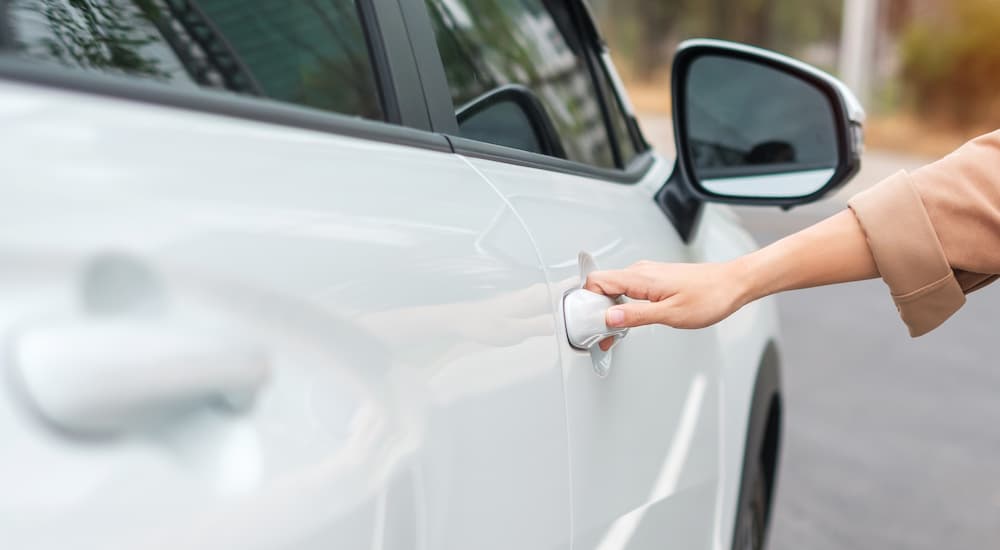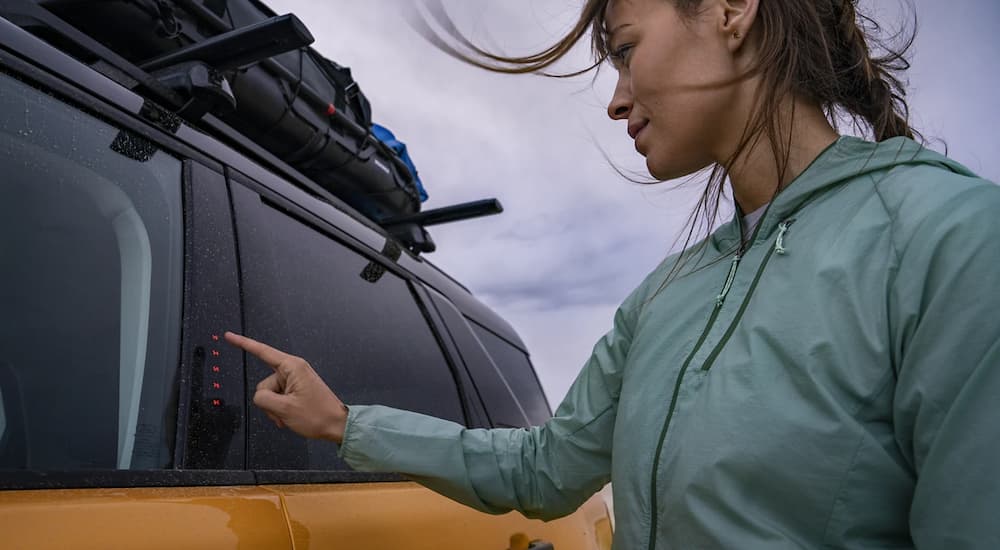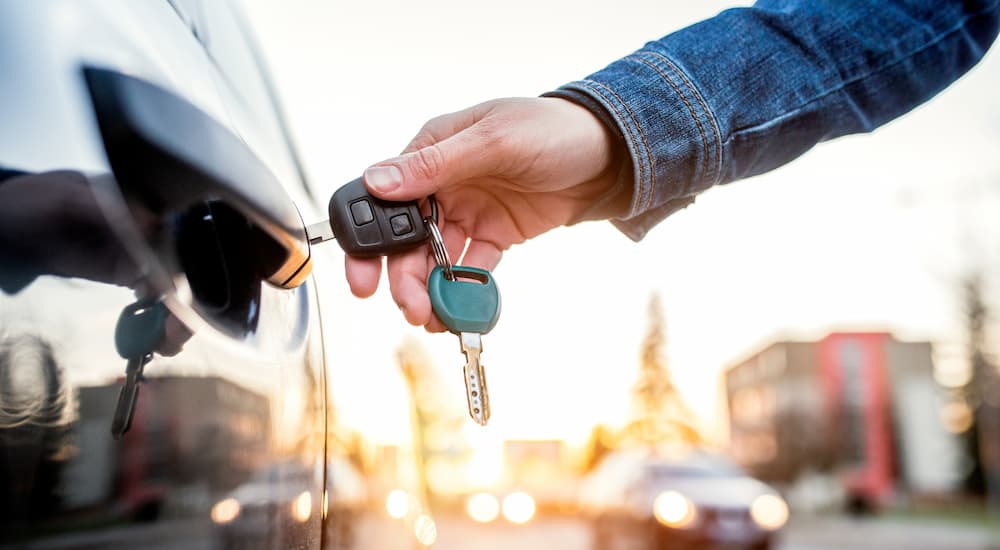It wasn’t the worst thing that could happen, but it was pretty close. My brothers and I were rushing to get to a matinee showing of the latest Star Wars movie, and we were running late. We passed the used car lot on the way and hooked a left into the shopping mall, with just enough time to spare to grab a bucket of popcorn and catch the latest adventures of Luke Skywalker, Finn, Rey, and the evil Kylo Ren. We were almost to the mall entrance when my brother turned to me and said, “Did you remember to lock the car?”
I reached in my pocket and right where the key should have been was nothing. We ran back to the car to see that it was locked with the key in the ignition and the engine still running. I grabbed my smartphone and made a call no one should ever want to make to my dad, explaining how my brothers and I had succeeded in locking the keys inside of a running car. Fortunately, my dad had a spare set and drove the 20 minutes to the mall to unlock the car. Needless to say, Star Wars had to wait for another day.
If this has ever happened to you, then the good news is that you can avoid this if you buy the right kind of used car. Automakers have spent the last 4 decades developing systems to assist folks who accidentally lock their keys in their car or lose them altogether. If you look for cars with these systems, you should be able to get to that showing of the latest Star Wars episode without fear that you misplaced them.
Those Keypads Weren’t Just for Decoration
If you look at some of the cars from the 80s and 90s, you’ll notice that some of them have a little keypad above the driver’s side door handle. No, these weren’t a weird cross between a pocket calculator and an automobile or a collaboration you never heard about between Texas Instruments and General Motors. These were actually the first attempt at giving cars a keyless entry.
Until recent years, people had to use a key not just to start their car but also to gain entry. Before the remote entry key fob was created, drivers would have to put their ignition key in a lock on the driver’s side door to unlock the car. Not only was this annoying, but if dirt or rust got into the cylinder, it could make it difficult to unlock the door. The original solution was to put a little keypad on the car, located by the windowsill above the driver’s side door. The pad had five different numeric combinations, each with two digits paired in numerical order. The driver would set a code consisting of five digits with the assistance of the dealer, with most folks often choosing their own or a loved one’s birthday. Since this was the days before the Internet, folks were not as worried about hackers cracking passwords and stealing one’s identity.
In addition to providing a keyless entry to the vehicle, the number combinations had another purpose. If you push the 3-4 button after entering your code, you would unlock all the doors. Do the same thing but push 5-6 instead, and you would open the car’s trunk. You could even lock all the doors by pushing 7-8 and 9-0 simultaneously. Yes, the 80s were so much fun!
While other automakers, such as Nissan, offered this feature on a number of its high-end cars, the one that really embraced it was Ford. Calling it Securicode, Ford began offering it on most of its cars starting in 1980, as well as its Lincoln and Mercury subsidiaries. While rudimentary by today’s standards, Securicode did get the job done. Although you may not see too many of these models on the used car market, in the odd chance you do, you’ll know that had I been driving a Ford with Securicode, I wouldn’t have had to make that dreaded call to my father.
Remote Keyless Entry
Around the same time that Ford was putting keypads on its car doors, Renault was coming up with something that was actually more revolutionary. The French automaker came up with a remote transmitter that could be used to lock and unlock the doors on its 1982 Fuego. As long as the transmitter’s battery hadn’t lost its charge, you could use it in place of the ignition key. Of course, you could just as easily leave the transmitter inside the car as you could the key, so this only solved part of the problem. Nevertheless, the folks in Detroit caught wind of this advance in France and hopped aboard the transmitter bandwagon, starting with General Motors. The automotive giant started offering the key fob entry device on the 1987 Cadillac Allanté. Soon, these started appearing on every automobile.
Proximity-Key Technology
Still, the issue of locking your keyfob inside the car along with the key that is attached to it remained. Automakers were still trying to figure out how to prevent drivers from locking the key and key fob inside the car, which often necessitated a call to a nearby service station or AAA. General Motors finally figured it out again, this time with proximity-key technology.
This innovation took the keyless remote entry to another level, adding an additional layer of security as well. First used on the 1993 Chevy Corvette, proximity-key technology has a sensor in the locking system that detects the presence of the key fob for that specific vehicle. It will then automatically unlock the doors when you approach the car. If you walk away with the key fob, the car’s doors will automatically lock after a certain amount of time. Best of all, if you leave the key fob inside the car, the car doors will not lock at all.
Soon, every car began to offer a remote entry with proximity key technology. Once again, General Motors rolled out the next innovation, this time a remote starter. This allowed you to start the key simply by stepping on the brake and pressing the starter button while the remote key fob was inside the car. The first car to feature this factory-installed feature was the 2004 Chevy Malibu. This got rid of the need for a key altogether, relying solely on technology to operate the ignition and lock your car’s doors. Fortunately for you, if you are looking for a used car built after 2004, you should have no problem finding one with this feature.
Digital Car Keys: The Next Generation
One of the most innovative automakers in recent years is Tesla. This EV-only manufacturer became the first to offer a digital car key to replace the need for a key or keyfob. The 2018 Tesla Model 3 became the first to offer a smartphone app with a unique digital code that you could use to unlock your car and turn it on and off. Of course, one problem that could arise is if your phone dies. This is why Tesla provides drivers with a special key that is the same size as a credit card, making it a perfect fit for your wallet alongside your actual credit cards and driver’s license.
Today, the digital car key has become fairly ubiquitous, with over 29 automakers offering them as a feature on their vehicles. Some automakers have even made them available on every model, such as General Motors, BMW, and Mazda. This also gives you the advantage of warming up your car on very cold or very hot days by just accessing the remote start program. This allows you to get your passenger car to the correct temperature without leaving your house.
Never Make “The Call” Again
That was one of the toughest calls I ever had to make to my father. At least it wasn’t raining or snowing, which would have made things that much worse. If we had a used car with a keyless remote and proximity-key technology or a digital car key, that dreadful day wouldn’t have happened. Now, with these devices, you lock and unlock your car as easily as making a call to your father, except now you won’t be calling to tell him you’ve locked the keys in his car.






